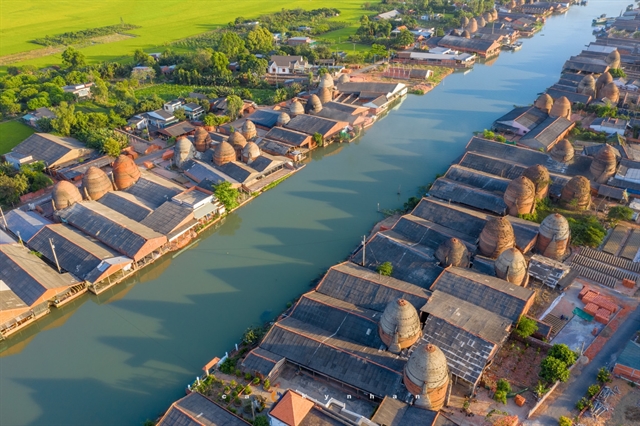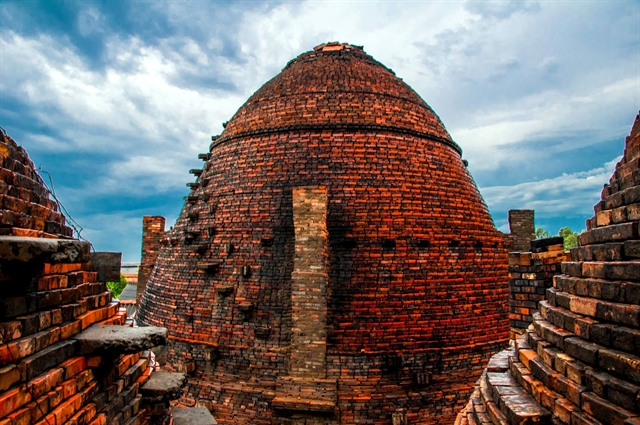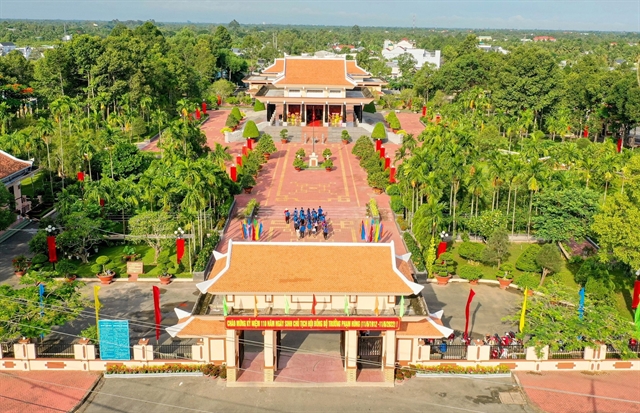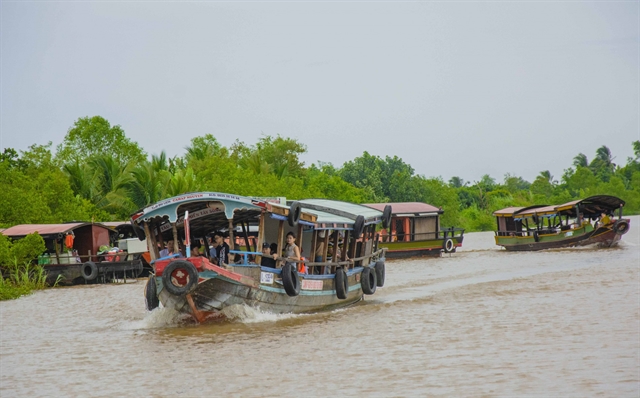Weather:
- Ha Noi 26oC
- Da Nang 27oC
- Ho Chi Minh 28oC

Vĩnh Long, situated in the bountiful southwest, is a land just a little over two hours away from HCM City, or approximately 100km if you follow National Highway 1A.
Similar to neighbouring Đồng Tháp, Vĩnh Long is blessed with abundant natural resources, particularly its fertile alluvial soil, which is perfect for cultivating tropical fruit trees and wet rice. Additionally, the Cổ Chiên River, flowing through the region, contributes to the rich natural landscape of the area. Let's embark on a journey to explore the wonders of this land.
Trà Ôn Floating Market
Trà Ôn Floating Market is located in Trà Ôn District at a prime location where the Hậu River and Mang Thít River meet.
While it might not be as renowned as other floating markets like Cái Răng in Cần Thơ or Cái Bè in Tiền Giang, Trà Ôn Floating Market has unique cultural characteristics, representing the people of the southwestern river area.
Tourists can visit Trà Ôn Floating Market during both the rainy season (from May to November) and the dry season (from December to April). During this time, the Mekong Delta region is at its most beautiful, with blue skies, vibrant green landscapes, fresh air, and low humidity. It is time for tourists to hop on a motorised boat and spend several hours witnessing the trading activities and daily life of the locals at the market.
The market starts its bustling day very early, around 2am when most people are still fast asleep. It's truly a fascinating experience if tourists can wake up as early (or stay up as late) as 2am to witness the morning rituals of the traders as they prepare their boats for the day ahead. Boats are the primary mode of transportation in the floating market, so all activities revolve around the river's water level.
Early morning marks high tide, making it the busiest and most crowded time at the market. However, the period between 5 and 6am is suggested as the best time to explore Trà Ôn Market.
Don't forget to savour the delicious breakfast dishes sold on the boats. Especially, make sure to try a hot bowl of beef noodle soup or noodles in crab chowder, and enjoy them right on the boat, accompanied by a cup of coffee, as you await the break of dawn in the far distance.

Mang Thít: Kingdom of bricks
One of Vĩnh Long's famous traditional crafts is pottery. Along the Cổ Chiên River banks lies the brick village of Mang Thít, stretching over 30km long. The sight of towering rows of kilns evokes a sense of prosperity and labour. Thanks to the red colour of the bricks, this place is also known as the Red Kingdom.
The brick and pottery craft in Mang Thít has been thriving for over a century, making it one of the biggest brick and pottery producers in the Mekong Delta.
During its heyday in the 1990s, the village boasted over 1,500 kilns producing highly sought-after roof tiles due to their mineral content and baking technique.
Currently, the district is home to 663 kilns, but only 115 kilns are in operation. In the past, when the brick-making craft was flourishing, each family workshop owned several kilns. The brick kilns are closely clustered together, resembling a beautiful kingdom with hundreds of small 'castles' when viewed from a distance.

The uniqueness of the ancient brick village lies in its kilns, each standing at a height of 5-12m with a dome shape, creating a distinctive architectural complex.

Vĩnh Long Museum
Vĩnh Long Museum is located in the centre of the market town, overlooking the historic Cổ Chiên River.
The museum was established in 1993, covering a spacious and green property. The exhibition areas are spread out and designed in harmony with nature.
Visitors can explore the cultural heritage of Vĩnh Long, tracing its history from the past to the present. The museum displays multiple artefacts, including outdoor pieces such as cannons, military tanks, stone artefacts, and aircraft.

Cai Cường's ancient house
Cai Cường's ancient house, situated in Bình Hòa Phước Commune, Long Hồ District, is a must-visit for those who appreciate the charm of traditional southern Vietnamese houses.
Built in 1885, the house belonged to the Phạm Văn Bổn family, who was a prominent landlord. The house features a grand and ancient appearance, with wooden columns supporting a roof of terracotta curved tiles.
The house's facade boasts a corridor with arched staircases, while the doors were crafted with arches, symbolising the owner's social influence. The interior of the house is equally captivating, with three rooms and a garden in the middle. The furniture, including desks, chairs, and antique cabinets, was made of precious wood and has been well-preserved over the years.

An Bình Island
An Bình Island, sitting between the Tiền River and the Cổ Chiên River, is a highly appealing ecotourism destination in Vĩnh Long.
The island is known for its fertile land and multiple vast gardens of fruit trees such as rambutan, mango, custard apple, and durian. Additionally, An Bình Island offers unique folk games, including wading in ponds to catch fish and rowing boats.
For those interested in spiritual tourism, a visit to Tiên Châu Pagoda is highly recommended. The pagoda is renowned for its legend of a fairy descending to earth, and holds significant religious importance for the local population.
If you visit the island in December and January, make sure to explore the traditional ochna village of Phước Định. During this time, the village is adorned with bright yellow blossoms and beautifully stunted trees, creating a picturesque scene. VNS

